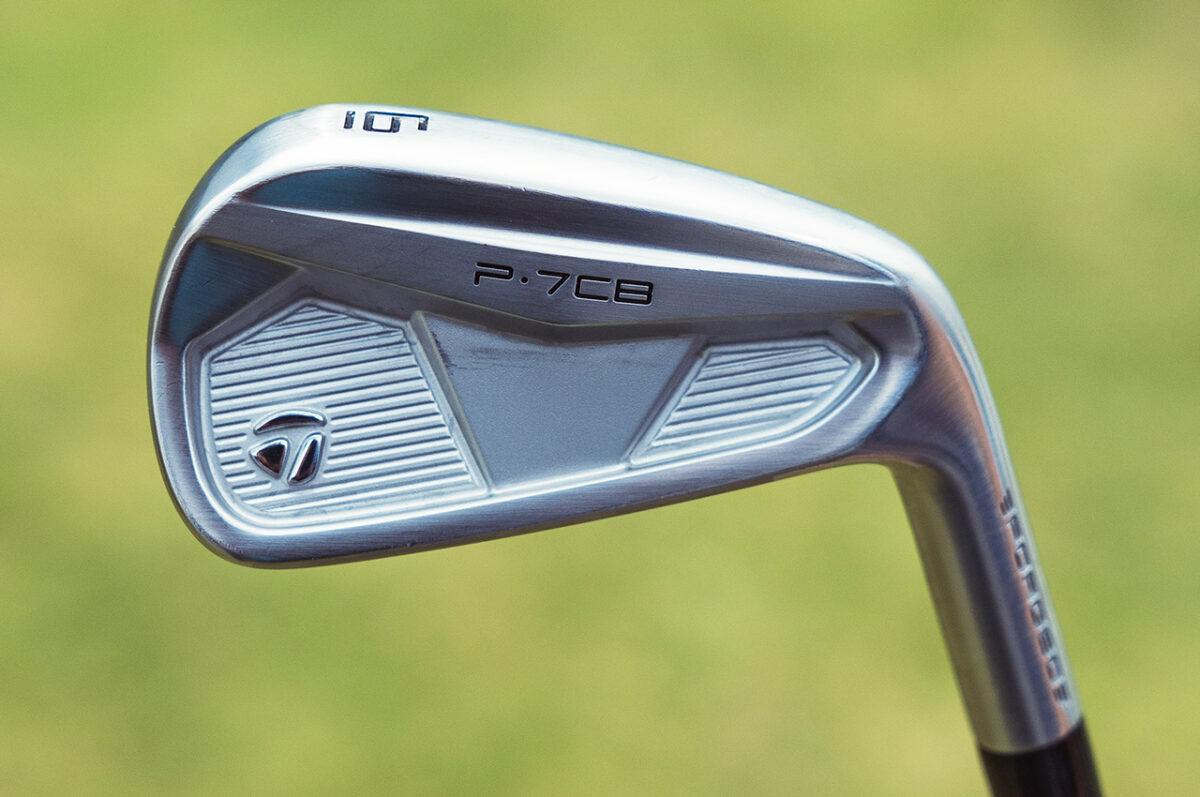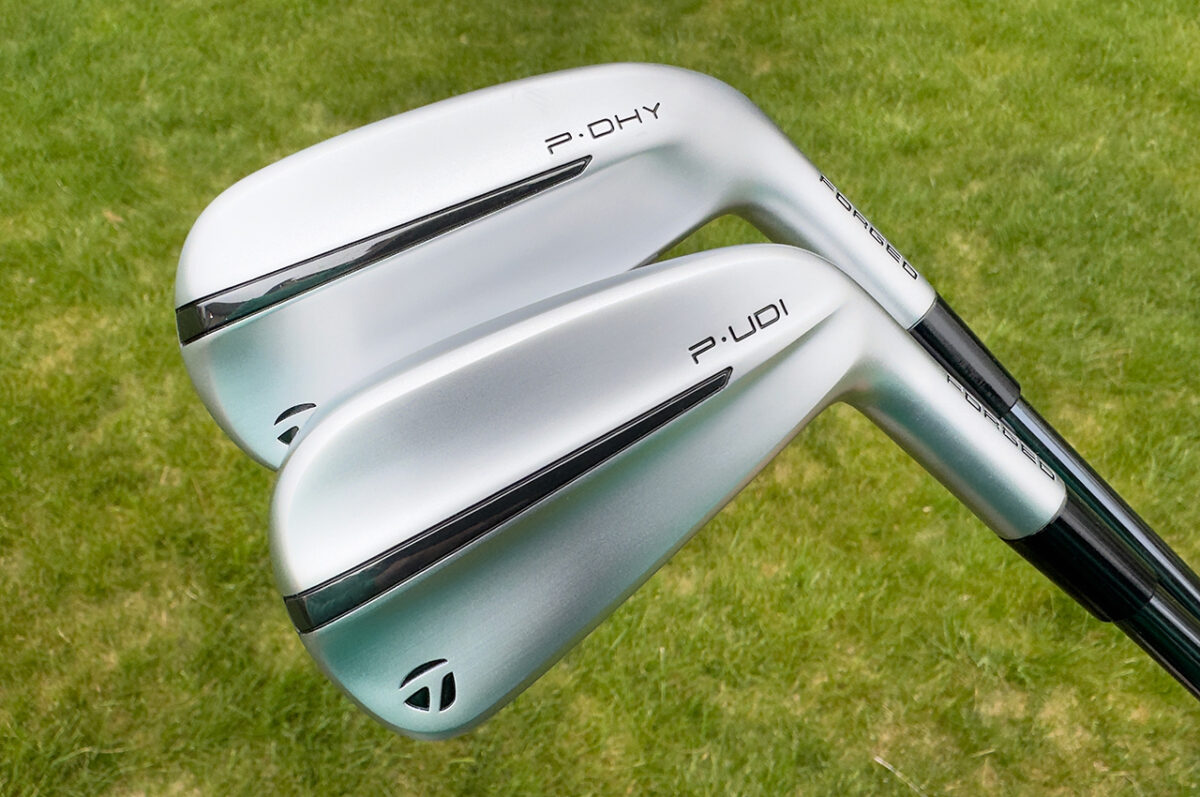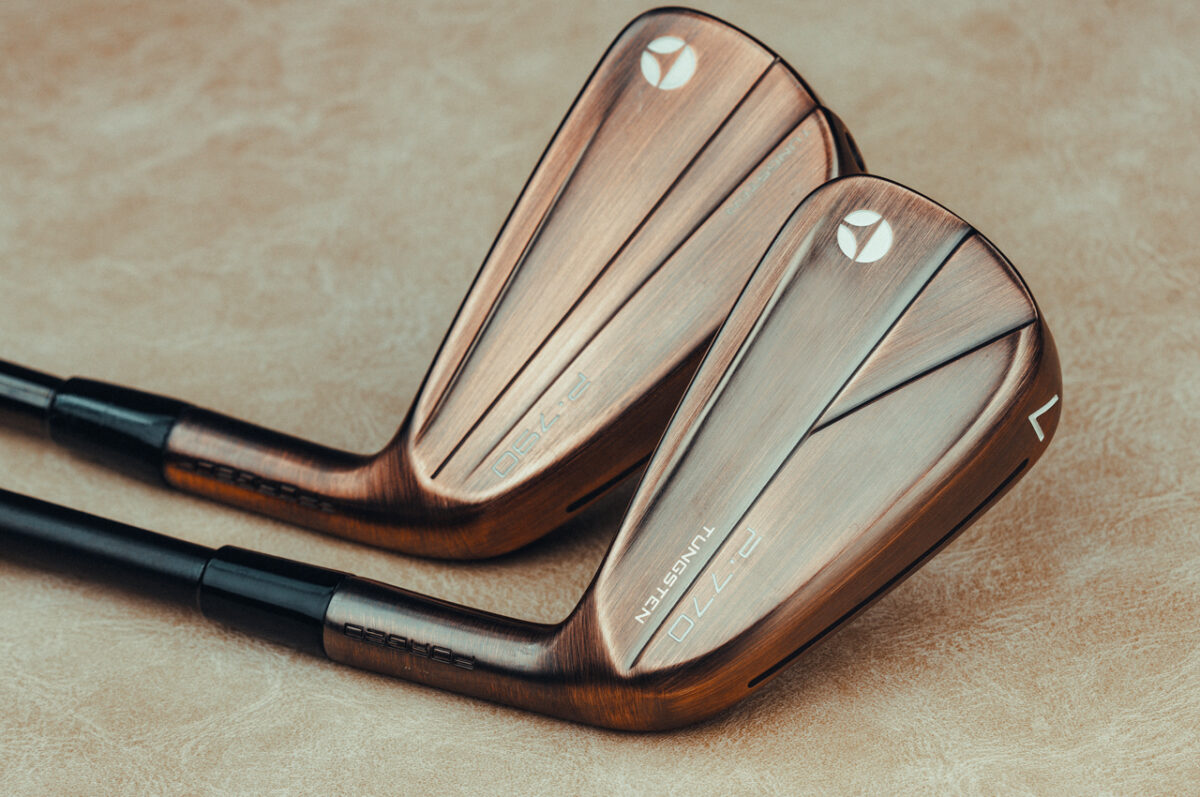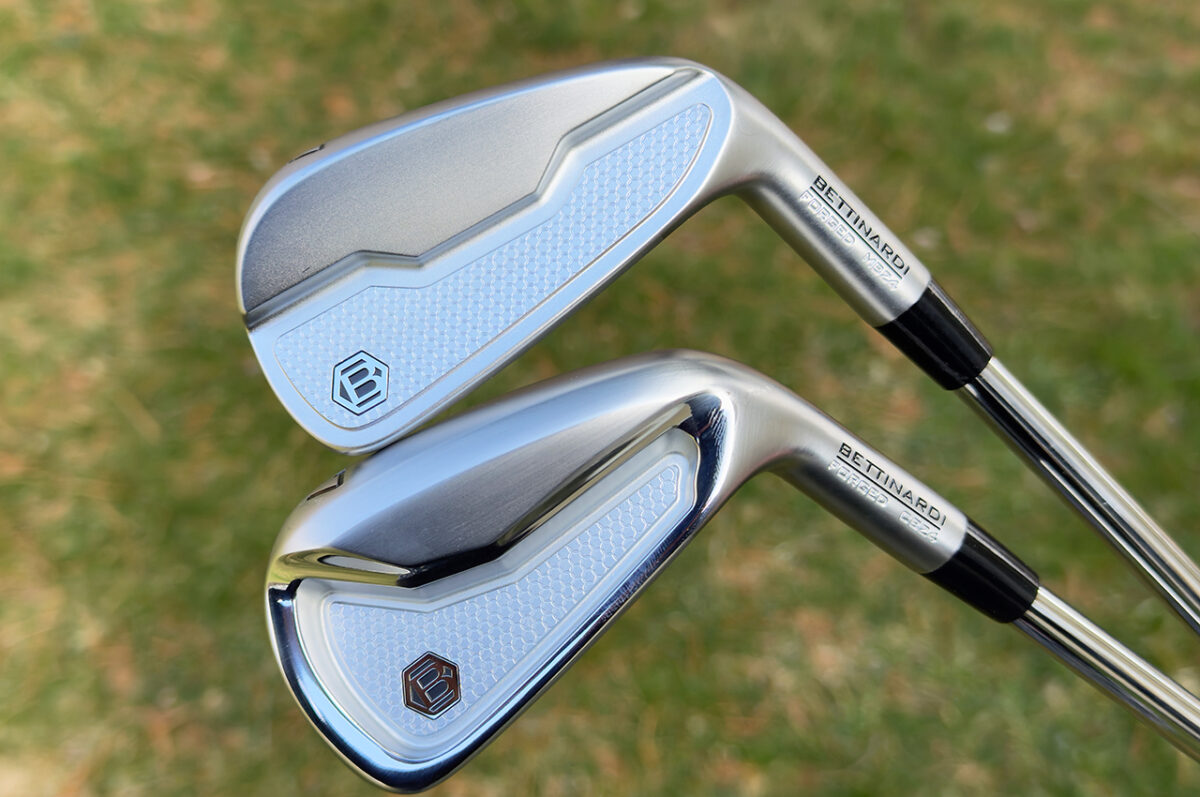From leather jackets to little dresses, black has a way of transforming simple things into classics, and the list of great rock ‘n’ roll songs that include the word ‘black’ in the title reads like the back of a greatest hits album. There’s “Paint It Black,” by the Rolling Stones, “Back in Black,” by AC/DC, “Black Is Black,” by Los Bravos, Santana’s “Black Magic Woman,” and Pearl Jam’s “Black” … we could go on.
When it comes to golf equipment, black clubs hold a mystique. Black is the most popular color for drivers, fairway woods and hybrids, but most irons are chrome-plated or designed with a silver tone. Black irons are somewhat rare, but some golfers covet them and when brands release special black versions of previously-released clubs, they perk up and take notice.
Rickie Fowler is among them, having put the just-released Cobra King Tour Black irons in his bag this week at the 2024 Sanderson Farms Championship in Jackson, Mississippi. Cobra has also just released the King CB and MB Black Combo irons for pros, college players and elite golfers.
Here’s your first look at the new dark-finished offerings from Cobra and everything you need to know about them.

Gear: Cobra King Tour Black irons
Price: $-Taper 120 Black steel shafts and Lamkin Crossline Black grips
Specs: Forged 1025 carbon steel with TPU insert, co-molded aluminum medallion and diamondized black metal finish
Available: Oct. 18, but available for pre-order NOW
Who it’s for: Low-handicap players who want soft feel with extra control and spin.
What you should know: A better-player’s cavity-back, the King Tour irons have a vibration-dampening insert hidden in the back to soften the feel, along with the compact size and classic look that accomplished golfers demand.
The deep dive: These irons are identical to the standard King Tour irons that were released in 2023 and that Rickie Fowler used to win the Rocket Mortgage Classic last season, except they have been given a black DBM (Diamondized Black Metal) finish. Cobra claims it is especially durable and does a good job of diffusing sunlight to reduce glare.
The King Tour Black irons are made using 1025 carbon steel that is forged five times to increase the precision of the process, make the faces completely flat and enhance feel.
[afflinkbutton text=”Shop Cobra King Tour black irons” link=”https://pga-tour-superstore.pxf.io/LXeD03″]

The cavity-back shaping is created by computer-controlled milling. This allowed engineers to make subtle changes to the undercuts around the head, taking extra material out of the top of the long irons to lower the center of gravity.
Cobra designers added a thermoplastic polyurethane insert and an aluminum co-molded badge to the back of the King Tour heads to soak up excessive vibrations.
You can read the full review of the standard Cobra King Tour irons here.

Gear: Cobra King Tour CB/MB Black irons
Price: $-Taper 120 Black steel shafts and Lamkin Crossline Black grips
Specs: Forged 1025 carbon steel with diamondized black metal finish
Available: Oct. 18, but available for pre-order now
Who it’s for: Elite ballstrikers who demand the ultimate in feel and control.
What you should know: This combo set for the game’s best players combines forged cavity-back long irons with muscleback blade scoring clubs and comes with a black finish that Cobra feels is more durable.
The deep dive: In early 2023, Cobra released the King CB and King MB irons for professionals, college players, and elite golfers with powerful, repeatable swings. If you are looking for forgiveness, go check out Cobra’s Dark Speed irons because neither the King CB nor the MB is designed to give you that. However, if you want feel and control, the King CB and MB are at the zenith of what Cobra can provide.
[afflinkbutton text=”Shop Cobra King CB/MB irons” link=”https://pga-tour-superstore.pxf.io/eKdRn6″]

Now, Cobra is offering the King CB and King MB Black Edition irons for low single-digit handicap golfers and tournament-level players who want something that delivers the highest levels of feel, control, and that look, well … kinda badass.
These clubs have the same diamondized black metal (DBM) finish that was given to the King Tour Black irons.
They King CB and MB Black irons are typically sold as a combo set comprised of cavity-back 4-, 5- and 6-irons that are blended with muscleback blades in the 7-iron through pitching wedge. While the CB long irons have slightly more perimeter weighting, all seven clubs have a thin topline, practically no offset, and a narrow sole. The King CB and MB Black irons feature the shortest blade length of any Cobra iron.

If you have a repeatable swing and can generate all the distance you need, the Cobra King Tour CB/MB Combo set can allow you to hit controlled draws and fades, knockdown shots, and more. At the same time, golfers will immediately know where on the face they hit the ball, thanks to the softness of the metal.
In addition to the standard blended set, the CB and MB models are each available as full sets in a 3-iron through gap wedge. The CB is available in both left- and right-handed versions, but the MB is only available as a complete set for right-handed players.
[afflinkbutton text=”Shop Cobra King CB/MB black irons” link=”https://pga-tour-superstore.pxf.io/eKdRn6″]
[afflinkbutton text=”Shop Cobra King Tour black irons” link=”https://pga-tour-superstore.pxf.io/LXeD03″]

















